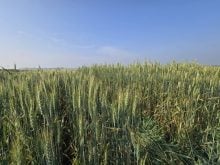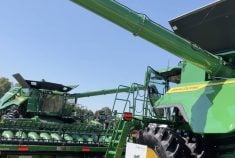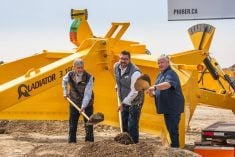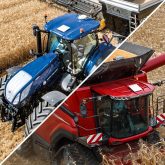Glacier FarmMedia – Logistics carry the day, not tactics – or so goes the military adage.
However true on the battlefield, the saying also has resonance in crop production. It holds true for autonomous field implements, just as it has for analog equipment, though tech developers don’t always get the message right away.
Why it matters: Field robots have potential, but running them requires a set of logistics that just don’t exist yet. Repeated operation in working field environments helps iron out the kinks.
Read Also
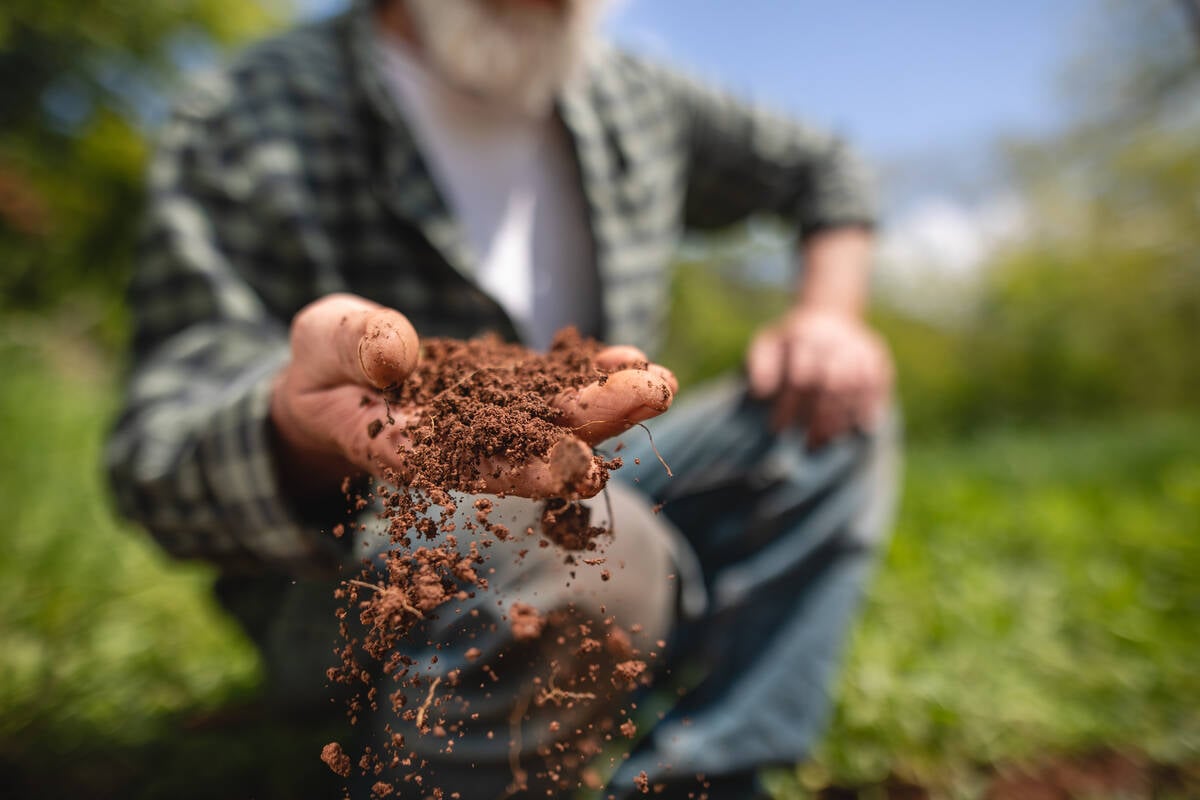
Finally getting paid for sustainable farming?
Alberta project says they might have a line on a workable ecosystem credit model to reward farmers for sustainability, and Manitoba might be next
It’s a perspective held by Chuck Baresich and his colleagues at Haggerty Creek Ltd., which he shared during an autonomous equipment demonstration tour July 13. The tour featured several commercially available robotic designs that Haggerty Creek, Ontario’s agriculture ministry, the Ontario Soil and Crop Improvement Association, equipment companies and others have been studying under the AgRobotics Working Group. It is a collaboration focused on developing better field robotics through practice in working field environments.
Advantages, drawbacks and challenges of each design were discussed and demonstrated across three sites near the southern Ontario communities of Bothwell, Dresden and Grand Bend. However, the need for good logistics was a common theme.
Putting tech through the ringer
“Believe it or not, this technology doesn’t work right out of the box… Not all of our experiences have been great,” said Baresich.
One example involved a failed attempt to seed 65 acres of oats with a drone. It should have taken three hours, according to the company providing the technology. But Baresich sent them home after failing to complete the task in six hours.
Another was the challenge some Omni POWER operators experienced, when four people were required to run the machine. With more experience and a better understanding of the platform’s quirks and challenges, Baresich and his colleagues can operate it with one.

“One of the reasons why my brother, for example, can plant 200 acres of corn in a day is he has the logistics figured out ahead of time. He knows where the fertilizer’s going to be, where the seed is going to be, how he is going to fill quickly – these types of things,” says Baresich.
“With an autonomous robot you have to charge it somewhere. It’s fine to say I’m going to have a machine that can do 10 acres a day, but if I put this in a 100-acre field that’s 10 miles away from my dry shed and no buildings around, how am I going to charge this thing?
“The reality is to say I’m going to load it on a trailer to drive it back home every night, charge it, and bring it back the next morning. That’s never going to happen. Farmers are too busy, it’s not a realistic expectation.
“That’s one of the reasons we’re taking baby steps bringing these machines out. Not only do we need to resolve the technology, the tooling, the GPS, RTK, cellular communications, we also have to solve the logistics piece. How do you charge them? How do you fix them? What errors happen? All these types of questions.”
Optimism abounds
In Baresich’s words, technology needs a purpose. Problems must be identified before technology can be used to solve them. The challenges seem nearly insurmountable, but many hosts and participants at the field day expressed optimism and confidence in the future of autonomous field equipment.
Mark Richards believes there is significant potential for robots like FarmDroid. His experience testing the solar-powered weeding robot on his Dresden-area sugar beet acres indicates it’s more than capable of weeding precision without crop disturbance.
Woody Van Arkel’s experience with the autonomous, multi-platform capability of the RoamIO HC robot shows it can capably mow perennial cover crops that grow between his cash crops.
Improving field robots to better suit Ontario and Canadian farms is one thing, but Baresich believes there’s also opportunity for Ontario design and construction if the right blend of technological and real-world production expertise can be found.
“We want to build machines here. A lot of these implements and attachments, we can do that here. We have all the tools to do this here.”
The RoamIO HC

The RoamIO HC is an Ontario-designed, multi-purpose platform that autonomously pulls field implements. Woody Van Arkel has been using it to manage his perennial cover crop program, and says it’s handier than his older gas-powered row mowing system. Bodywork on the pictured model is not yet complete because the AgRobotics Working Group devoted all resources to ensuring the machine worked right, rather than making it look pretty.
Naio Oz

Designed in France, the small-statured Naio Oz is pictured after emerging from corn at the Haggerty Creek yard. It now serves as an inter-row tillage robot, but Chuck Baresich says its use depends “on your imagination.” Work is required to make sure the small, slow-moving machine is set up to handle soil type, residue level and other conditions. Current challenges include bogging down by residue and moisture, difficulty removing larger weeds and the fact that corn stalks sometimes look like human obstacles to its non-contact safety sensors.
DJI T-30 drone

This agricultural drone has been used for spot spraying, eliminating crop damage and compaction incurred by driving through row crops with conventional sprayers. Downforce can be a concern, though flying higher than the standard 10-foot altitude can alleviate at least part of the problem. Large conventional sprayers can be a hazard on the road and operational expertise is needed to drive them, but drones like the T-30 can be transported from field to field via pickup truck.
The Goat (Nexus)

This Zamboni-like autonomous machine picks weeds mechanically. At least it’s supposed to. Chuck Baresich says this example is still “very much in the prototype stage.” It features what he considers to be an unnecessarily loud generator to charge the power source, and quick moving weeding arms. Operations are controlled by its Quebec-based creator company.
– This article was originally published at Farmtario.



